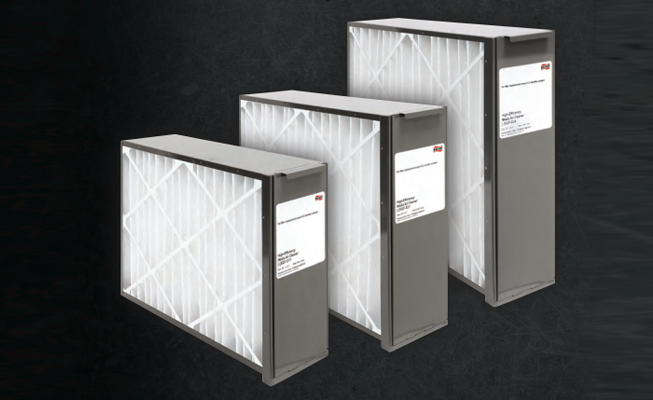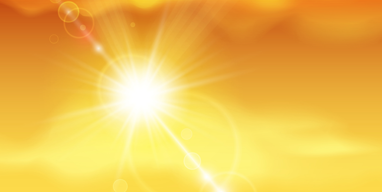Indoor Air Quality (IAQ) Guide
Most people consider air quality a given, something we can always count on, both indoors and outdoors. A visit to an area with poor air quality or stepping into space with poor indoor air quality will make you appreciate the good fresh air.
This is a guide to help you understand the things that threaten Indoor Air Quality in homes and offices and the dangers the poor Indoor Air Quality Guide poses to health. It also covers solutions to help you remove problems before they affect health and comfort.
Indoor Air Quality Defined
Indoor air quality is defined by the depiction of concentrations of pollutants and thermal conditions that may negatively affect the health, comfort, and performance of a building’s occupants. (Sam Kubba PH.D., LEED AP, in Handbook of Green Building Design and Construction (Second Edition), 2017)
Just like your golf score, the lower the number of particulates in the air the better. The poor indoor air quality will lead to health issues, reduced productivity at work and at school, and trouble sleeping. When poor air quality permeates a building, it is often referred to as “sick building syndrome.” Good indoor air quality improves health, productivity, and sleep.
Have We got Your Attention?
When you hear the word “pollution,” normally outdoor pollution comes to mind. We read big headlines about spills (on land or water) and smog released into the air that has a negative effect on the environment and poses health risks to people who come in contact with the pollution.
Since people spend at least 80% of their time indoors, Indoor Air Quality is an important consideration for our everyday lives. Clean air is essential for good health! Common effects of poor Indoor Air Quality include headaches, allergy symptoms, and fatigue, but it can also lead to more serious, long-term health respiratory issues.
Poor IAQ will also complicate existing respiratory issues such as asthma, COPD, and cancer. It is important to identify sources of indoor air pollution.
Indoor Air Pollution Sources
Pollen. The top indoor air pollutant in homes and businesses is common pollens. More than 50 million Americans suffer from seasonal allergies. The chief offenders include:
Grass pollen—leading to what is commonly called “hay fever”
Tree pollen—from March to May different trees bloom and release copious amounts of pollen
Wildflowers—Ragweed, everyone’s favorite, is one of many common wildflowers that negatively affect folks in late summer and fall
Dander. Both pets and humans have small pieces of skin and hair that flake off and become airborne. Dander is smaller than dandruff and is too small to be noticed unaided. It is the chief diet of microscopic insects known as dust mites.
Since dander is microscopic, it becomes airborne and enters human respiratory systems, leading to allergies.
Dust. Most dust is microscopic—you only see approximately 1% of dust is visible in that sunbeam streaming through your window. Since 99% of dust is invisible, it is a much bigger problem than most realize, as dust transports viruses and bacteria throughout indoor spaces.
Fungus Spores. Mold, mildew, and mushrooms/toadstools reproduce via tiny spores, only 3 to 40 microns in size—only half the width of a human hair. Spores cause allergy symptoms in humans and some can result in serious illnesses. Air-borne spores also propagate the growth of mold and mildew inside your home.
Gases. Some homes have indoor combustion sources, such as fireplaces, gas furnaces, ranges, and candles. New furniture and carpet give off volatile organic gases (VOC). Internal combustion engines in the garage, including automobiles and lawnmowers, release carbon monoxide and carbon dioxide, which makes its way into the house via doors and windows.
This collection of gases contributes to indoor air quality and can cause respiratory problems, even death.
Human Symptoms of Poor Air Quality
How can you tell whether poor air quality has affected you or your family’s health? The particulates listed above attack your respiratory system in very predictable ways, from minor annoyances to serious life-threatening problems. Symptoms include:
- Dry, itchy eyes, nose, and throat
- Sinus congestion, sneezing, and coughing
- Sensitivity to allergies and shortness of breath
- Headaches and fatigue
- Dizziness and nausea
If these issues persist and just won’t go away, it could be some other sickness or it could be poor indoor air quality.
House Symptoms of Poor Air Quality
In addition to health symptoms, your home may exhibit signs of poor Indoor Air Quality. Home symptoms include:
- Excessive dust. Dust normally collects on surfaces, but when excessive dust can be seen, it may indicate poor Indoor Air Quality. Significant dust will also collect on your cold air return.
- High Humidity. Ideal indoor humidity should be kept between 35 and 50%. Less than that will cause dry, itchy skin and respiratory illness; more than that leads to mold problems.
- Mold or mildew growth. If your HVAC system is not removing water vapor from the air as designed, mold and mildew can grow in unexpected places.
- Unpleasant odors. Foul odors from mold/mildew, chemical smells, or an earthy “dirt” smell may be an indication of poor Indoor Air Quality.
- Poor air distribution. Hot or cold spots around the house can indicate system problems. Air that does not circulate as needed may allow air to grow stale.
- Poor HVAC performance. A failing HVAC system contributes to poor Indoor Air Quality by not distributing fresh air properly or not filtering particles adequately.
Improving Indoor Air Quality
Understanding the causes, symptoms, and warning signs of poor Indoor Air Quality, what can be done to improve the quality of air in your home? Here are the top ways to maintain clean indoor air in your home:
- Change your HVAC Filter. HVAC stands for heating, ventilation, air conditioning system and it provides warm or cool fresh air. This system’s job is to circulate the fresh air throughout the house. While it is circulating, the air passes through a filter.
If the filter is operating correctly, dust and other particulates build up and the filter will appear “dirty.” The air filter should be changed at least every three months. Other factors, such as multiple pets or serious illness in a family member might require filter changes.
You will also find filters in other household appliances and these filters will need to be cleaned or replaced as necessary. Look for filters in vacuum cleaners, clothes dryers, and kitchen vents.
- Clean your air ducts. As the ventilation system moves air throughout your house, it also travels through a series of ducts, both to and from the blower component. Dust, dander, and other particles accumulate overtime on the sides of the ducts.
Proper maintenance for your HVAC system includes periodic cleaning of the ductworks; an annual cleaning is recommended. Without this cleaning, the particles continue to recirculate throughout the house repeatedly.
- Your carpet is acting as a filter. Carpets and rugs are actually good at catching dust and other particles, acting as an air filter. Cleaning your carpets regularly, at least weekly, will improve IAQ in your home. If you live near a dirt road, a construction site, or a busy highway, your carpets may need to be cleaned more frequently.
- Control indoor humidity. Your AC system also removes water vapor from the indoor air, you may see the water dripping from the condenser unit. As mentioned earlier, dry air may cause skin or respiratory dryness, but moist air encourages mold and mildew to grow.
This growth will most likely be found in the ductwork, where it comes in contact with both moisture and organic material, such as dust.
- Indoor plants can help. Small indoor house plants, such as ferns and lilies, will act as nature’s air filter and through photosynthesis, convert a portion of the carbon dioxide into oxygen. Even a few plants can make a difference, so give it a try.
Larger plants like bamboo, aloe vera, agave, and lantana give an indoor air quality boost and add beauty to your home.
- Boost IAQ with an air purifier. If someone in your family has a serious health concern if your home environment suggests that you need more than a regular air filter or for your peace of mind you are considering improving Indoor Air Quality, investigate whether an air purifier might be in order.
Following is a list of the types of filters and purifiers available and the use for each. Some air purifiers are capable of removing 99% of the dust, dander, pollen, and mold spores circulating through your system.
Types of Filters and purifiers
- Filters. The first line of defense in your HVAC air purifying system is your air filter, usually a paper filter with openings as small as 5 to 10 microns. Since we are not used to thinking in those measurements, a human hair is between 20 and 70 microns in diameter. This filter is generally positioned to filter air before it enters the blower chamber and gets recirculated.
Most dust is larger than 5 microns, so this filter traps the lion’s share of larger particulates. Some filters are disposable and some are washable/reusable. Some filters will have an activated charcoal layer. The voids on the surface of the charcoal trap gaseous odors, such as volatile organic compounds (VOC), fumes, and food odors.
The next step is HEPA filters, or High-Efficiency Particulate Air filters, with openings as small as 0.3 micrometers in size. HEPA filters are capable of trapping mold, bacteria, and some viruses.
ULPA, or Ultra-Low Penetration Air filters have an even smaller opening and achieve standards needed in industrial clean rooms and the nuclear power industry. ULPA filters remove particulates as small as .12 micrometers, which is 99.9995% of air particulates.
For best results, you will need to use a regular air filter and a HEPA/ULPA filter in tandem.
- Ionizing Purifiers. The in-duct ionizing purifier can be added to your HVAC system. An ionizing purifier emits negative ions, giving particulates, like dust, an electric charge. You experience ionization when you rub a balloon on your hair and stick it to the wall. Electrically charged particles stick together, become larger, and are more easily trapped by filters.The ionizing purifier also has metal plates with a positive electric charge to attract negatively charged particles. Ionizing purifiers have the added benefit of removing smoke and odors from the air. Negative ions make people feel refreshed, like the air after a thunderstorm.
- Ozone Generators. Ozone generators turn oxygen (O2) into ozone (O3). Ozone is effective in removing particulates from the air and is commonly used for smoke abatement after a fire. The treatment is remarkable and leaves a room or furniture smelling great.However, ozone must be generated in large concentrations to be effective and a large concentration of ozone is toxic to humans. Low concentrations of ozone are not very effective at removing particulates. While it has useful applications, ozone is not recommended for ongoing home use.
- Ultraviolet light. Ultraviolet radiation neutralizes microorganisms, such as viruses, bacteria, and mold spores. The light is installed inside of the ductwork prior to the air filter. The neutralized organic material is more easily trapped in the filter and no longer poses a threat to your family.
Does your home need an Air Purifier?
An enhanced air filter in your HVAC system removes approximately 99% of airborne pollutants if you change your filter as required and keep your ductwork clean with an annual cleaning. That leaves 1% of all particles, but some home environments require special care.
- Families with severe allergies—An air purifier can help reduce the amount of pollen or other allergens and provide greater comfort.
- For families with respiratory illnesses or a compromised immune system—exposure to recirculating infectious microorganisms needs to be eliminated.
- Families with other nearby environmental pollution sources—air purifiers can make home a refuge.
This information is provided for the purpose of helping you determine whether your home would benefit from an air purifier. Allcool has extensive experience installing the following products and considers them the best products on the market for the Houston area. We recommend them to your family should you need enhanced air purification in your home.
Whole House Exact Fit Media Air Cleaners by Ruud
- This enhanced filter system was designed to fit any Ruud central heating system, making the air in your home cleaner and more comfortable.
- Exact Fit System – Cabinets are an exact-fit system solution to your Ruud residential air handlers and gas furnaces providing quick installation by your HVAC professional.
- Each cabinet includes one MERV 8 media filter. A 4” Deep-Pleated Filter maximizes the surface area of the filter and lasts up to one year before replacement.
- Traps and Filters – Reduces major pollutants, such as dust and pollen, from the air passing through your HVAC systems.
- Finish – Steel gray paint matches Ruud equipment.
- 5-Year Limited Warranty* – We stand behind our warranty and make it easy for our customers to work with us.
AccuClean™ Whole-Home Air Cleaner
- Removes up to 99.98 percent of allergens from the filtered air
- Catches particles down to .1 microns in size (ULPA)
- Eight times more effective than the best HEPA room appliance
- 100 times more effective than a standard one-inch throwaway filter
- Delivers cleaner air and more of it
- Reusable filter can be cleaned by vacuuming
REME HALO Whole Home In-Duct Air Purifier
- The REME HALO® in-duct air purifier utilizes RGF’s proprietary Reflective Electro Magnetic Energy technology.
- Installed into the supply plenum of your existing HVAC air ducts, the REME HALO® in-duct air purifier produces ionizing plasma that is distributed through the air handler, through the duct system, and into the conditioned living space.
- The REME HALO® ionizing plasma sweeps through your home, actively purifying pollutants at the source.
- The charged plasma induces particles to coagulate or stick together making them bigger and easier for your filter to catch.
- Easily integrated with your existing HVAC system. The unit doesn’t take away any living space and operates silently
- Two (2) quick release features for easy, no tool, cell replacement
Pure UV CleanCoil Germicidal UV Light
- CleanCoil eliminates 99% of viruses, bacteria, and mold by cleansing airflow as it passes through the ductwork of your central air system.
- Powerful UV-C technology eradicates harmful mold and bacteria when installed near the evaporator coil, prolonging the life of your HVAC system for long-term savings and fewer maintenance visits.
- CleanCoil distributes UV energy uniformly in all directions through the duct to cleanse the air
- Reduces allergies and helps prevent illness
- Prevents the growth of mold and bacteria on system components
- UVC serves as a chemical-free solution
- Extends life and efficiency of HVAC system for long-term savings
Air Purifiers and COVID-19
The Covid-19 pandemic left us in our homes for months and since the virus is new, many questions have been raised concerning safe ventilation and air purification.
Because the virus is new, answers came slowly and information has been very confusing. After a year, a little testing has given us some insight into effective mitigation for this virus.
If someone in your home has Covid-19, an air purifier will not prevent the spread of the virus from each sneeze or cough. The virus travels in water droplets and lands on surfaces. However, the virus is approximately 0.125 microns in size and travels in droplets larger than 1 micron.
The enhanced filtration and air purification described above have demonstrated to easily and effectively remove air-borne viruses including Covid-19. Both the CDC and MD Anderson Center encourage enhanced filtration and air purification measure for homes with a particular need to mitigate Covid-19.





 Many viruses are spread through respiratory droplets. These droplets originate when an infected person coughs or sneezes and the resulting droplets become airborne. These contaminants can spread through your air conditioning system, mixing with your home’s air supply, and be spread throughout your home. The HVAC system and ductwork can contribute to spreading unwanted pathogens in the air, not because your system is contaminated as a factory defect, but because the air in your home is contaminated.
Many viruses are spread through respiratory droplets. These droplets originate when an infected person coughs or sneezes and the resulting droplets become airborne. These contaminants can spread through your air conditioning system, mixing with your home’s air supply, and be spread throughout your home. The HVAC system and ductwork can contribute to spreading unwanted pathogens in the air, not because your system is contaminated as a factory defect, but because the air in your home is contaminated. Surface ultraviolet and airstream ultraviolet disinfection systems deactivate pathogens. UV disinfection systems are shown to reduce microbial load and pathogens commonly found in HVAC systems and drain pans.
Surface ultraviolet and airstream ultraviolet disinfection systems deactivate pathogens. UV disinfection systems are shown to reduce microbial load and pathogens commonly found in HVAC systems and drain pans.